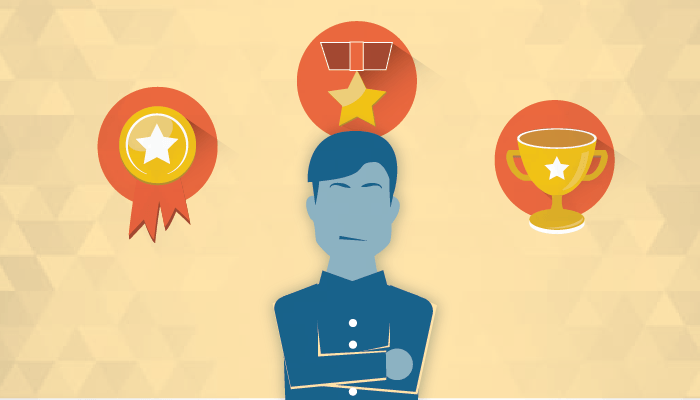Gamification has been called many things: dead, manipulative, bunk, a miracle. As with any new technology, it definitely has its critics. We recently cleared up some common gamification myths, as well as discussed the fact that gamification is far from dead.
With those issues cleared up, we can take a closer look at how consumers and employees actually feel about gamification and whether they’re becoming too jaded for it to be successful.
When done right, gamification is intrinsically rewarding for both employees and consumers. In fact, they often prefer the addition of game mechanics in order to make everyday tasks more engaging.
The truth is consumers and employees are not too smart for gamification. They are however, too smart for bad gamification.
The Relationship between Gamification and Employees
Employee-facing gamification has experienced huge growth as businesses leverage it to increase engagement. After all, Happy and engaged employees tend to be more motivated and productive – which is ultimately better for business.
With so much of the discussion centered around what companies can gain from gamification, the way that workers feel about these programs is sometimes unexamined. Our recent research sheds light on this perspective.
Based on our recent survey, we found that over 70 percent of respondents felt employee engagement software would help them perform better at work. Other notable findings include:
- Over 25 percent of workers said it would help them stay motivated.
- Fifty four percent of respondents indicated that they would be more likely or much more likely to perform a task if it had game elements.
- Over 69 percent of employees felt an engagement program would help them at work.
So if employers and employees agree that these systems provide opportunities for improvement, what’s the issue?
Well, some pundits argue that it doesn’t matter if employees like, want, or know they’re experiencing gamification. Though gamification can seamlessly integrate with a system when done well, this type of thinking can lead to talk of gamification being manipulative, or disrespectful to users.
While this is possible, well implemented gamification allows users to make informed choices about their engagement. When employees know software is adding value and helping them achieve their goals, gamification becomes empowering.
Employees are smart. They can recognize when game elements are masking something boring and they may become wary when employers aren’t transparent about its use. That’s why digital engagement programs that don’t support worker’s goals and personal motivations are doomed to fail.
In other words – it’s the strategy, not the technique.
For example, imagine your call center wants to leverage gamification to encourage employee efficiency. If a customer service rep is rewarded for resolving an email or phone call swiftly, then you’ve just made fast service the priority. Is that actually wise?
While productivity is important, placing the emphasis on just efficiency can lead to less than stellar customer service and an onslaught of additional issues or complaints. A better strategy would be rewarding reps based on customer satisfaction. Consumers often value better interactions and more competent staff above pure speed. Additionally, focusing on and rewarding quality service ensures employees are motivated to improve their skills.
If you take away the game elements, the activity still needs to be useful and meaningful to employees. Learning, progress, and recognition are intrinsically important to people. In this case, gamification software can add value by providing employees and managers with data about performance. Identifying where reps are most successful and where they need more coaching empowers both parties to focus on proficiency and growth.
How Businesses Can Use Gamification with Customers
Engaging customers is another issue businesses face. Just like employee gamification, consumers won’t appreciate game elements if they aren’t rewarding.
Most customer loyalty programs attempt to incentivize consumers with items like free sandwiches or coffee for their repeat business. But consumers are interested in more than discounts or simply getting things for free.
For example, less than 10 percent of frequent flier miles are redeemed every year. So if people are rarely using them, then why are those programs so successful?
In part, because they’re fun.
Playing games isn’t just about winning. Airline rewards leverage our love of achievement and competition. It’s about the experience, not just the reward. Give your customers recognition so that they make a meaningful connection with your brand.
The Power of Good Gamification
Gamification should give people the opportunity to do something they want to do, not something you want them to do. Our brains are wired to seek rewards and the dopamine that comes with achieving them. Aligning rewards with what intrinsically motivates employee and consumers is the key to successful gamification. Businesses should shy away from adding a gamified veneer to unrewarding and frustrating tasks, then labeling it gamification. Employees and consumers are indeed too smart for that.
Top Gamification Software Recommendations

